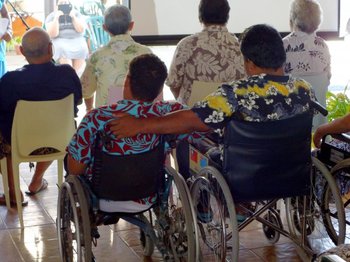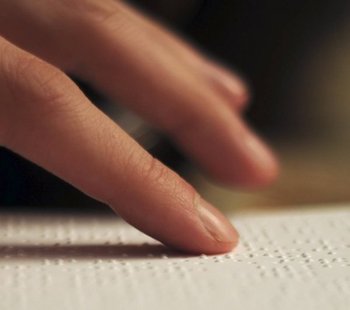Representation matters, and is commonly acknowledged in reference to politics, arts and entertainment. It is also the driving force behind the global disability motto “nothing about us without us”. Rooted in this ideal, is the promise of humanitarian resolutions that prioritise equitable representation of people with disabilities who have the right to make crucial choices regarding preparedness, response and recovery.
If we are to make any substantive progress in implementing truly inclusive humanitarian interventions, then increasing the number of people with disabilities in decision-making positions must serve as our initial starting point. Devotion to such an endeavor requires a significant shift in how we staff humanitarian missions, not just how we embark on community engagement practices once teams get on the ground. Change of this magnitude comes with a radical reimagining of worth.
An introspective examination of the experiences we deem valuable enough to entrust with major decision-making responsibilities. An appraisal of all budgetary accounts to ensure that experts with disabilities are appreciated enough to be reasonably accommodated and fairly compensated for their contributions. A restoration of power enlightened by a central belief in humanitarian leadership, emanating directly from those most impacted throughout conflicts, crises and climate change.
The 2016 Charter On Inclusion of Persons with Disabilities in Humanitarian Action, expressly acknowledges this critical need for more decision makers with disabilities. The Charter recognises that “persons with disabilities and their representative organisations have untapped capacity and are not sufficiently consulted nor actively involved in decision-making processes concerning their lives, including in crisis preparedness and response coordination mechanisms.” In essence, who we hire, consult and appoint to leadership positions is vitally important in shaping how we extend help to the intersectional communities we serve during each phase of humanitarian interventions.
the most inclusive changes will emerge once a diverse collective of people with disabilities are counted amongst global decision makers.
Although disaggregated data on disability is scarce at present, a cursory search of disability in relation to any sector will confirm disproportionately high impact numbers. The compounded affects descending from these multiple systems of oppression are largely caused by environmental barriers and attitudinal biases. Many humanitarian inclusion directives hope to address inequities by inspiring changes in the hearts, minds and actions of decision makers in the field and those operating from afar. Nevertheless, the most inclusive changes will emerge once a diverse collective of people with disabilities are counted amongst global decision makers. This is not to say that people with disabilities don’t tussle with sexism, racism, xenophobia, homophobia and internalised ableism, the abhorrent effects of which are clearly apparent throughout America’s white-led disability community. Nor should we allow ourselves to wrongly assume that all people with disabilities are interested in working on disability-centered issues. We can however remain mindful of these points while proactively striving to secure decision makers with disabilities in all positions and partnerships. In doing so, we grow the rate of representation thereby increasing the probability of decisions being made by those most impacted by global disasters/crises.
As a cross-cutting issue, disability is unarguably reflected within all sectors. It therefore speaks to reason to have people with disabilities represented as leaders in decision-making positions within all sectors:
If our interventions focus on women and girls,then programme leadership should include women and girls with disabilities.
If our projects are geared towards the construction of new WASH facilities, then project leadership should consist of people with disabilities who make decisions on overall usability and access.
If our efforts address food insecurity, then people with disabilities with various dietary considerations should be amongst those leading the initiative.
Citizen ownership or community buy-in is often considered as a necessary component for sustainable development plans. Similarly, movement from the margins to the center involves reclaiming space and restoring power. A movement with room for people from around the world to lead on decisions affecting their countries and intersectional communities. A peaceful transition from passive recipients of care to protection coordinators. And, hopefully, steady progress propelled by a power newly possessed among diverse people with disabilities from all walks of life with a shared commitment to advancing equity and prioritising humanity.

